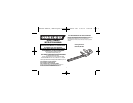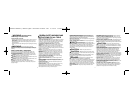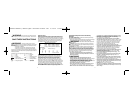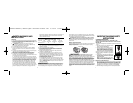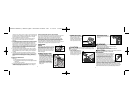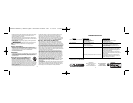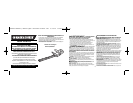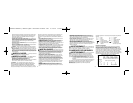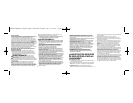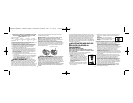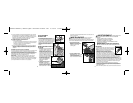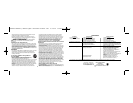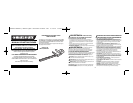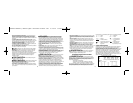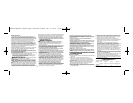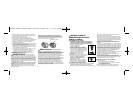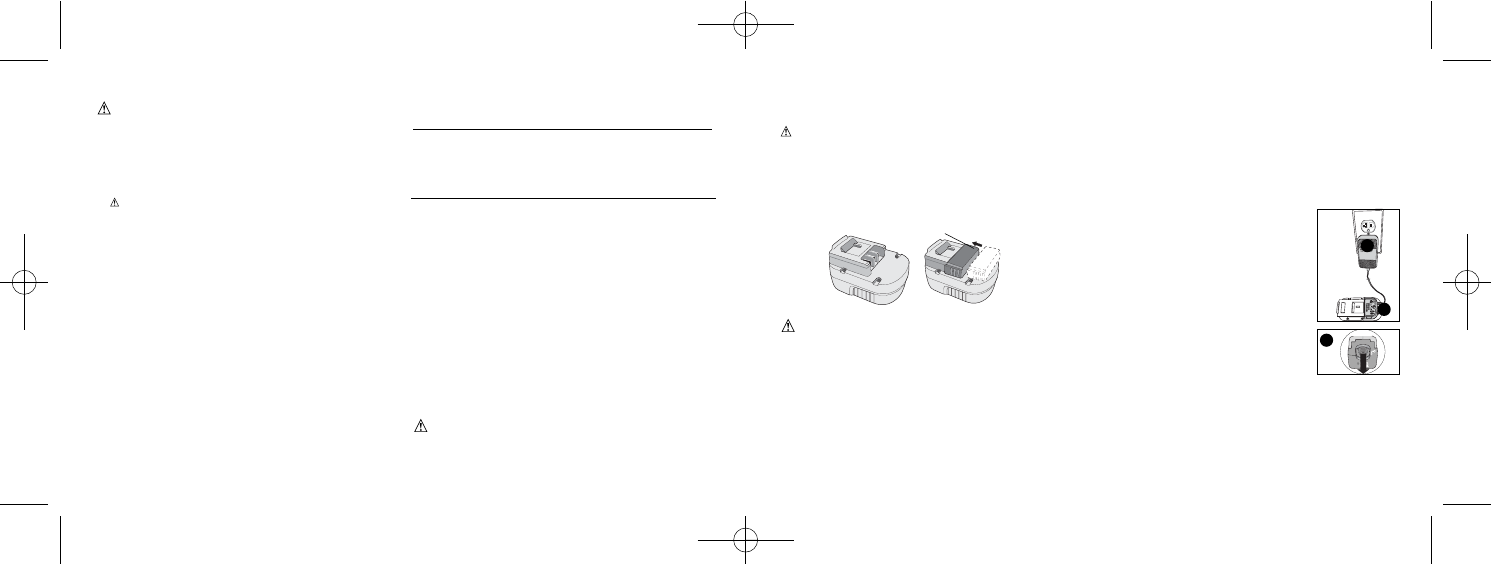
been dropped, run over or damaged in any way (i.e., pierced with a
nail, hit with a hammer, stepped on). Damaged battery packs should
be returned to service center for recycling.
CAUTION: When not in use, place tool on its side on a stable
surface where it will not cause a tripping or falling hazard. Some
tools with large battery packs will stand upright but may be easily
knocked over.
Battery Cap Information
A battery storage and carrying cap is provided for use whenever the
battery is out of the tool or charger. Remove cap before placing
battery in charger or tool.
WARNING:Fire hazard. Do not store or carry
battery so that metal objects can contact exposed battery
terminals. For example, do not place battery in aprons, pockets, tool
boxes, product kit boxes, drawers, etc., with loose nails, screws,
keys, etc. Transporting batteries can possibly cause fires if the
battery terminals inadvertently come in contact with conductive
materials such as keys, coins, hand tools and the like. The US
Department of Transportation Hazardous Material Regulations (HMR)
actually prohibit transporting batteries in commerce or on airplanes
(i.e., packed in suitcases and carry-on luggage) UNLESS they are
properly protected from short circuits. So when transporting individual
batteries, make sure that the battery terminals are protected and well
insulated from materials that could contact them and cause a short
circuit.
IMPORTANT CHARGING SAFETY
INSTRUCTIONS
CHARGING PROCEDURE
THE BATTERY PACK IS NOT FULLY CHARGED AT THE
FACTORY. CHARGE BATTERY PACK FOR AT LEAST 9 HOURS
BEFORE USE.
The charger is designed to use standard household 120 volt 60 Hz
power.
1. Plug the charger into any standard 120 Volt
60 Hz electrical outlet (figure 1).
2. Slide the charger onto the battery pack as
shown in figure 2 and let the battery pack
charge initially for 9 hours. After the initial
charge, under normal usage, your battery
pack should be fully charged in 6 to 9 hours.
2a) During charging the green LED will appear.
2b) When charging is complete the green LED
will go off.
3. Unplug charger, and remove the battery pack.
Place the battery pack into the tool until it
“clicks” into place.
NOTE: To remove the battery pack, press
down on the release button on the back of the
battery pack and slide out (figure 3).
IMPORTANT CHARGING NOTES
1. After normal usage, your battery pack should be fully charged in
6 to 9 hours. If the battery pack is run-down completely, it may
take up to 9 hours to become fully charged. Your battery pack
was sent from the factory in an uncharged condition. Before
attempting to use it, it must be charged for at least 9 hours.
2. DO NOT charge the battery pack in an air temperature below
SAFETY WARNINGS AND
INSTRUCTIONS
CHARGING
1. This manual contains important safety and operating instructions.
2. Before using battery charger, read all instructions and cautionary
markings on (1) battery charger, (2) battery pack, and (3)
product using battery pack.
3. CAUTION: To reduce the risk of injury, charge only
Black & Decker Battery Packs. Other types of batteries may
burst causing personal injury and damage.
4. Do not expose charger to rain or snow.
5. Use of an attachment not recommended or sold by Black &
Decker may result in a risk of fire, electric shock, or injury to
persons.
6. To reduce risk of damage to electric plug and cord, pull by plug
rather than cord when disconnecting charger.
7. Make sure cord is located so that it will not be stepped on,
tripped over, or otherwise subjected to damage or stress.
8. An extension cord should not be used unless absolutely
necessary. Use of improper extension cord could result in a risk
of fire, electric shock or electrocution.
a. Two-wire cords can be used with 2-wire or 3-wire extension
cords. Only round jacketed extension cords should be used, and
we recommend that they be listed by Underwriters Laboratories
(U.L.). If the extension is to be used outside, the cord must be
suitable for outdoor use. Any cord marked for outdoor use can
also be used for indoor work. The letters "W" or "WA" on the
cord jacket indicate that the cord is suitable for outdoor use.
b. An extension cord must have adequate wire size (AWG or
American Wire Gauge) for safety, and to prevent loss of power
and overheating. The smaller the gauge number of the wire, the
greater the capacity of the cable; that is, 16 gauge has more
capacity than 18 gauge. When using more than one extension to
make up the total length, be sure each extension contains at
least the minimum wire size.
CHART FOR MINIMUM WIRE SIZE (AWG) OF EXTENSION CORDS
NAMEPLATE RATING AMPS – 0 – 10.0
Total Extension Cord
Length (ft) 0-25 26-50 51-100 101-150
(0-7,6m) (7,6-15,2m) (15,2-30,4m) (30,4-45,7m)
Wire Gauge 18 16 16 14
9. Use only the supplied charger when charging your unit. The use
of any other charger could damage the battery pack or create a
hazardous condition.
10.Use only one charger when charging.
11. Do not attempt to open the charger or the unit. There are no
customer serviceable parts inside. Return to any authorized
Black & Decker service center.
12.DO NOT incinerate battery packs even if they are severely
damaged or completely worn out.
13.Do not incinerate the batteries. They can explode in a fire. A
small leakage of liquid from the battery cells may occur under
extreme usage, charging or temperature conditions. This does
not indicate a failure. However, if the outer seal is broken and
this leakage gets on your skin:
a. Wash quickly with soap and water.
b. Neutralize with a mild acid such as lemon juice or vinegar.
c. If the battery liquid gets in your eyes, flush them with clean
water for a minimum of 10 minutes and seek immediate medical
attention. MEDICAL NOTE: The liquid is a 25-35% solution of
potassium hydroxide.
WARNING: Never attempt to open the battery pack
for any reason. If battery pack case is cracked or damaged, do not
insert into charger. Do not crush, drop or damage battery pack. Do
not use a battery pack or charger that has received a sharp blow,
1
Battery Cap
6
7
2
3
90560834 NHT518, NHT524.QXD: chainsaw booklet new 2/12/10 8:08 AM Page 6



